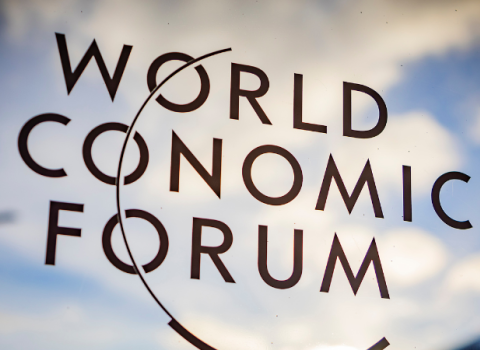With international research papers piling up fast, Birmingham Prof. Shakila Thangaratinam tries to make sense of it all for pregnant women and their doctors – a key step to connect science with society

Prof. Shakila Thangaratinam. Photo: University of Birmingham.
More than 130,000 research papers have already appeared on COVID-19; and turning that into sensible advice for politicians and the public is hard work even for the experts. At the World Health Organisation Collaborating Centre at the University of Birmingham, UK, Prof. Shakila Thangaratinam, an expert in maternal and perinatal health, is leading a team combing through the new literature to translate it into practical advice that pregnant women and their doctors can use.
It is tough work – but an essential service that the research world must provide to society, she says in an interview with Science|Business. “The work is done when it reaches the public.”
|
Researcher: Prof. Shakila Thangaratinam, University of Birmingham, UK, and co-director of the WHO Collaborating Centre for Global Women's Health at the University of Birmingham Research area: maternal and perinatal health Key funder: World Health Organization (WHO). But seeking further funding. Links: COVID-19 in Pregnancy: PregCOV-19LSR; Twitter: @unibirm_mds & @thangaratinam In 2019, University of Birmingham obtained the designation of World Health Organization (WHO) Collaborating Centre for Global Women’s Health for its research supporting WHO’s programmes on maternal and perinatal health. WHO provided initial funding, and other partners include the Cochrane Gynaecology and Fertility Group. |
|---|
Q. Tell us about your COVID-19 project.
We are currently identifying all the relevant studies on pregnancy and COVID-19 through systematically searching for evidence on prevalence, risk factors, complications and risks of mother to child transmission. But by the time you publish, another 50 studies have come out. It's an unprecedented situation we are in.
This work is done in collaboration with the WHO. We continue to update our findings and report every month, and this is the key to providing information for healthcare professionals and guideline makers based on the latest and updated evidence. The team is made up of medical students from the University of Birmingham and 15 core researchers who are working on this project.
Q. What are the challenges?
One problem: the large numbers of studies that are being published every day in this area, many of them only as preprints, and some including duplicate data. That requires us to update our analysis as new studies emerge. There's always a tension about giving information out to the public as soon as you can, because your review takes some time, it takes weeks - and you're sitting on information that's going to inform practice.
But you have to balance that against putting out something that's not gone through a full peer review process.
Another difficulty we've had is a lot of duplicate data: The same woman or the same group of women would be reported in different studies, by different authors. So we look at the characteristics of the women, and also look at the hospitals from which the data have been obtained. And we also link with other groups that are doing work similar to ours and ask, “Have you guys identified any duplicates?” We contact the author saying, “Are you aware of another study?” We cannot afford to double count women between studies.
I would definitely say people have been rushing with the research, and also journals have been rushing in publishing them. However, it's very likely some people are putting in intense work and more hours and everyone's doing things in a much faster pace. But I think we need to be really careful that any scientific outputs are peer reviewed and that there is transparency in the data. We saw some of the papers have been retracted by journals, because journals are quick to publish and then realise there is a big gap in the quality of the data.
Q. Do you see much misinformation about the virus?
Yeah, there is some misinformation. I think it's because of the avalanche of information out there: the bad studies are all sort of mixed in. To our knowledge, very few are systematically assessing the quality. That's another thing we are doing: assessing the quality of every single study on COVID-19 and pregnancy that's been published and including a systematic review so people can see for themselves. In the UK, we've been pretty much on top of what advice goes out to pregnant women, as well as those who have recently delivered. But I think globally, there's a lot of noise and for some questions we don't have answers. For example, we don't know if tests like the antibody tests are accurate in pregnant women. We don't know if the treatments work the same in pregnancy because very few pregnant women are recruited in many of the trials. One of my pleas would be to include pregnant women in vaccine trials or drug trials. Because if we don't have evidence showing these also benefit pregnant women, then this will translate into a reluctance to use these treatments in pregnancy.
Q. What have you found so far in the pregnancy research?
We summarise it on our website. But based on current evidence, we have not found any evidence to suggest increased risk of miscarriage or serious complications such as stillbirths and neonatal deaths due to COVID-19. Pregnant women should follow safety advice against coronavirus similar to the general population. So far, it appears that about 5 per cent of all pregnant and recently pregnant women are diagnosed with COVID-19, and one in 10 of pregnant women without symptoms may still have the disease. This is global data, and we should be able to provide updated results in the next two weeks.
We also found that symptoms such as cough and fever are commonly present in pregnant and recently pregnant women with COVID-19, similar to what has been observed in the general population. But unlike the general population these symptoms occur less frequently in pregnancy. The risk of complications from COVID-19 appears to be broadly similar to what is observed in the non-pregnant group. But more studies comparing both groups are needed for us to provide these estimates confidently.
The rates of preterm birth may be higher in pregnant women with COVID-19, but we need more information to determine if these are due to early delivery decisions made by the clinicians or if these women went into labour spontaneously at early gestation. However, this is based on preliminary data, with very few studies providing comparative data.
There have been data from individual studies suggesting that pregnant women of Black and ethnic minority origin are at risk of severe COVID-19 and complications. We are currently synthesising the evidence on whether the mother’s age, her ethnicity, history of pre-existing medical condition and number of pregnancies are associated with complications to the mother and baby.
Q. What are you doing with your findings?
I'm working closely with the Royal College of Obstetricians and Gynaecologists. Our aim is to share if something major comes out – something that needs immediate action - and they’re in contact with NHS England and other groups. On the global side, we’re working directly with the WHO. Right now we’re trying to address the urgent question of mother to child transmission. Current evidence suggests potential likelihood of mother-to-child transmission, but the risks are very low. Check our website, and more data on the subject will be added in a few weeks.
We have also been running webinars to get the information out publicly, in collaboration with the East London International Women’s Health Charity. Our first webinar, on 20 June, had people from 36 countries asking questions like: What to do if they don't have testing capabilities? What’s the risk of mother to child transmission? Is the virus going to increase the risk of miscarriages? And what about safety for the health care professionals? That's a huge concern globally, but particularly in countries that don't have the ability to test the patient. So you don't know if the mom has got the condition, and there is a paucity of personal protective equipment. (Our next webinar is 11 July, 1330 BST, on intrapartum care.)
We are also currently developing an animation on the topic to inform the public about the background on COVID-ian pregnancy and the risks to the mother and the baby. We're always on the lookout for novel ways to reach the public.
Q. Do you think the pandemic will change how people view science?
I think the length of time between the research and policy change has shortened with a pandemic. This is a step in a positive direction. In the past, we have lost years implementing something that has been found to be beneficial. Also, science has become more approachable to society. So for example, the findings on the beneficial effect of the Dexamethasone for severe COVID patients. It’s almost unthinkable for something like that to so quickly reach society. And scientists are becoming better at communicating findings to the public in lay language. But I think we also need to be wary, there needs to be healthy scepticism - not all science that's put out or published is equal in terms of quality.
We need to be aware of the limitations of studies - beware of the false positives and the false negatives. That needs to be part of the communication to the public, and I don't think we are there yet.





 A unique international forum for public research organisations and companies to connect their external engagement with strategic interests around their R&D system.
A unique international forum for public research organisations and companies to connect their external engagement with strategic interests around their R&D system.